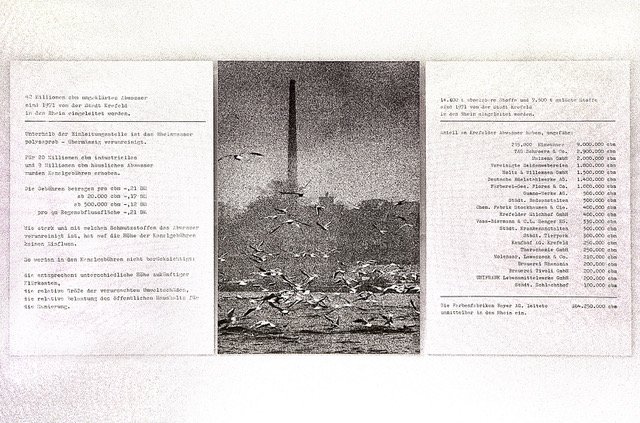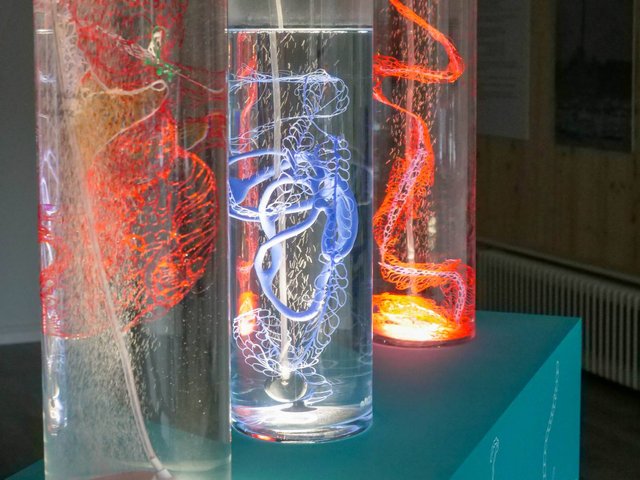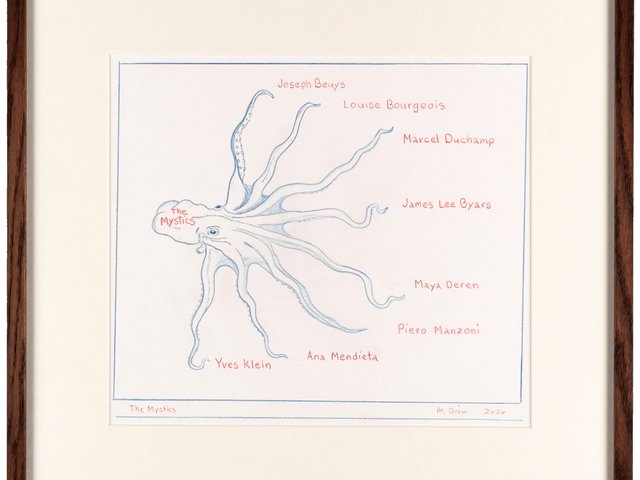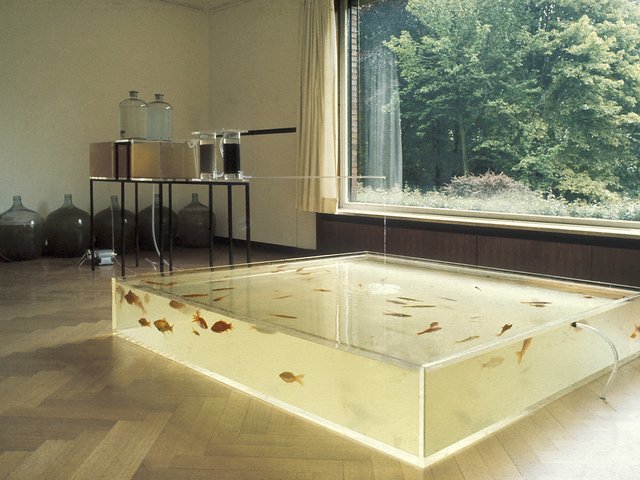Hans Haacke
Hans Haacke's Krefeld Sewage Triptych [Krefelder Abwasser-Triptychon] is exhibited as part of (re)connecting.earth (02) - Beyond Water. "Behind a veil of grey mist on the horizon, a chimney rises into the sky, surrounded by the silhouettes of the buildings that border it, in front of which we can make out a shoreline descending towards the water. In the foreground of the image, a group of seagulls in flight stand out. The background is bathed in diffused light. Only the side panels provide information on the central subject: the panel on the left contains volume indications and a scale of charges, while the panel on the right provides information on dissolved and suspended substances in Krefeld's wastewater and on the main discharges into the city's sewer system.
In 1971, 42 million m3 of untreated wastewater were discharged into the Rhine by the city. Sewerage charges vary between 21 and 12 pfennigs, depending on the increase in discharges, which favours large polluters over private households. The composition and concentration of hazardous substances as well as the extent of environmental damage and clean-up costs are not taken into account. The central panel [of the triptych] shows the discharge point of the Bayer paint factories at PK 765.7 in Krefeld-Uerdingen on 21.1.1972, where seagulls were picking up dying fish from the Rhine - a familiar image in those years (see the thiodan scandal in 1969). [...] As the NRZ (Neue Rhein/Neue Ruhr Zeitung) acknowledged: "[...] the photo is anything but an advertisement for Krefeld", "an El Dorado for hungry seagulls".” (Text: Ursula Ströbele, Kunst Natur Politike, ZI Munich 2019/2020; Museum Abteiberg, Mönchengladbach 2020).
▶ Artwork: Krefelder Abwasser-Triptychon, 1972, Museum Haus Lange, Krefeld, Loan by Ursula Ströbele, Zentralinstitut für Kunstgeschichte, Munich
▶ Venue: Association pour la Sauvegarde du Léman
▶ Scientific collaboration: Association pour la Sauvegarde du Léman




